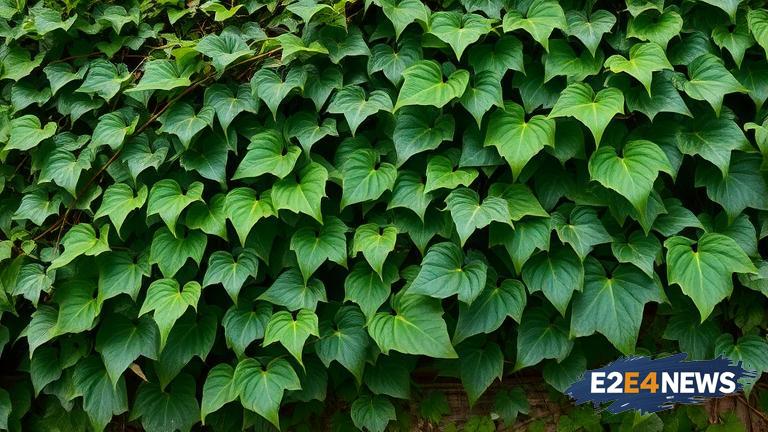English ivy, also known as Hedera helix, has been a popular choice for gardeners and landscapers for centuries. However, its invasive nature has led to its classification as a harmful species. The plant’s ability to spread quickly and outcompete native species has raised concerns among environmentalists and conservationists. English ivy can grow up to 8 feet per year, covering trees, buildings, and other surfaces, causing damage and disrupting ecosystems. The plant’s roots can also damage infrastructure, such as sidewalks and walls. In addition, English ivy provides a habitat for pests and diseases, which can further harm native species. The plant’s classification as an invasive species is a result of its impact on biodiversity and ecosystem health. English ivy is native to Europe, western Asia, and north Africa, but has been introduced to other parts of the world, including North America, where it has become a major problem. The plant’s invasive nature has led to calls for its removal and replacement with native species. However, removing English ivy can be a challenging and costly process. The plant’s roots can extend deep into the soil, making it difficult to eradicate. Furthermore, English ivy can regrow from small fragments of root, making it essential to remove all parts of the plant. Despite the challenges, many organizations and individuals are working to remove English ivy and restore native habitats. The classification of English ivy as an invasive species is an important step in raising awareness about the plant’s harmful effects and promoting sustainable gardening practices. It is essential for gardeners and landscapers to choose native species that do not harm the environment. By making informed choices, we can help protect biodiversity and preserve ecosystem health. The impact of English ivy on the environment is a reminder of the importance of responsible gardening practices and the need for continued conservation efforts.
